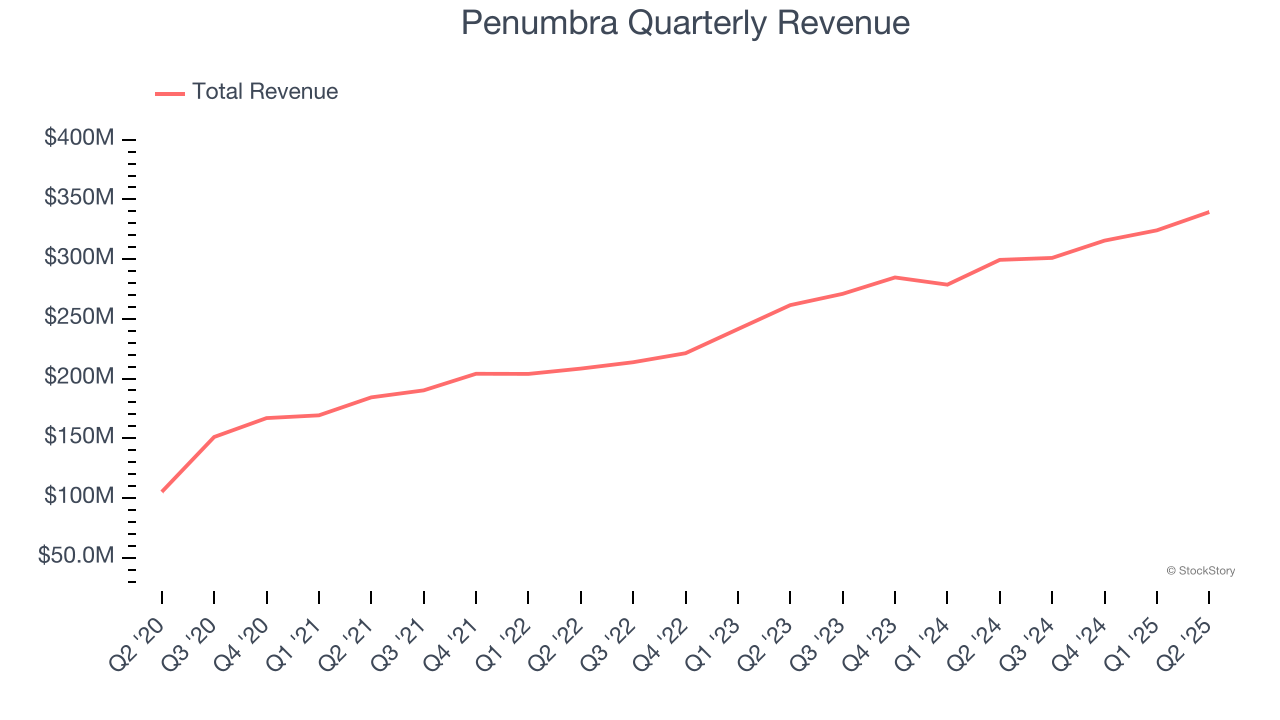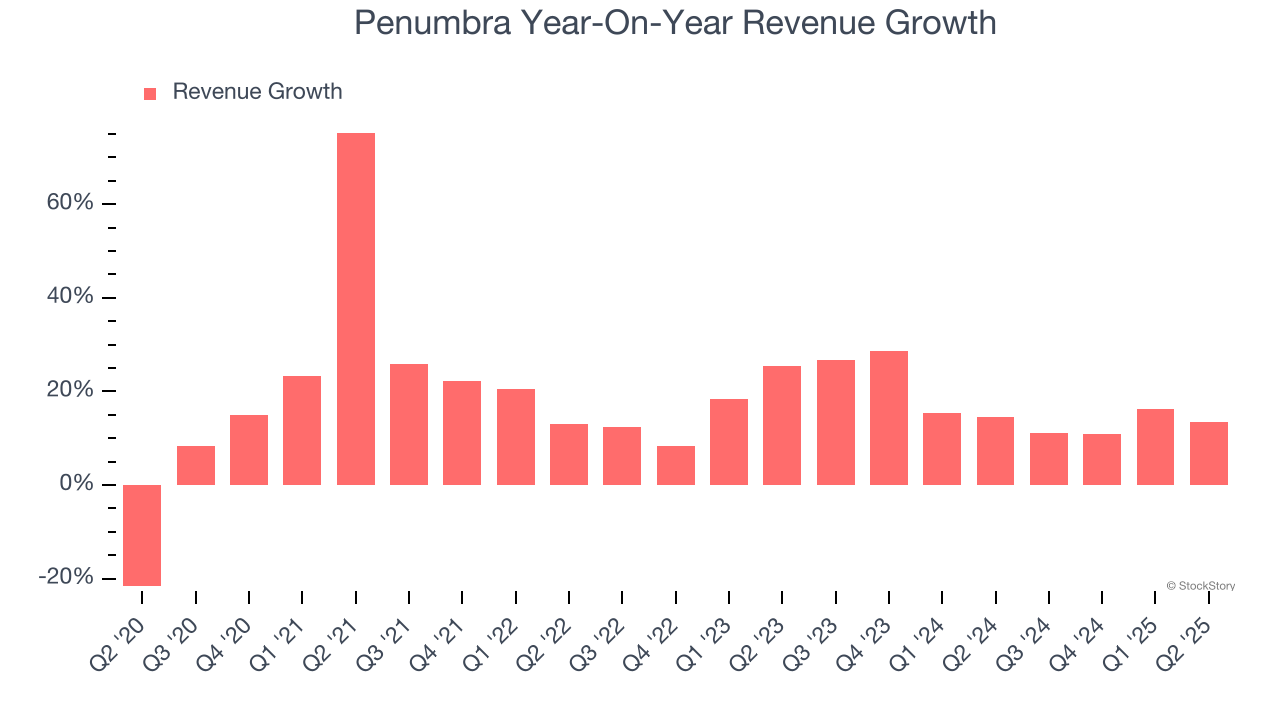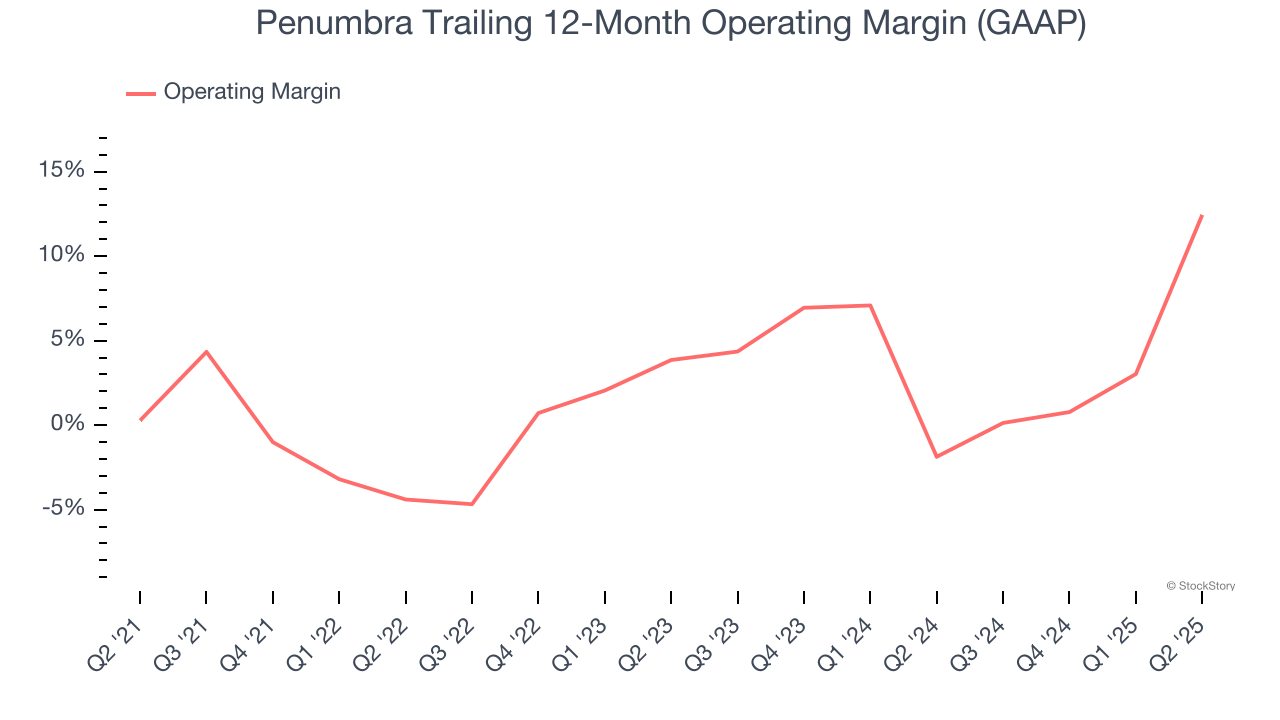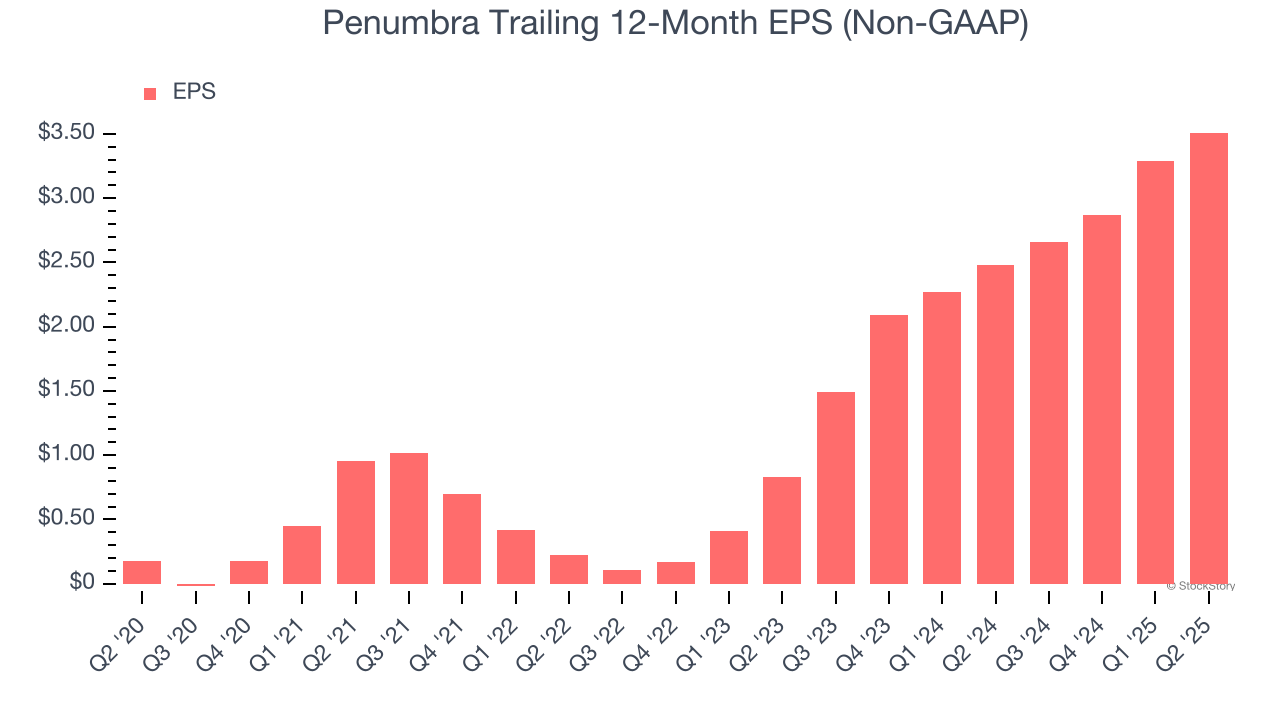
Medical device company Penumbra (NYSE:PEN) announced better-than-expected revenue in Q2 CY2025, with sales up 13.4% year on year to $339.5 million. The company’s full-year revenue guidance of $1.36 billion at the midpoint came in 0.6% above analysts’ estimates. Its non-GAAP profit of $0.86 per share was 4.7% above analysts’ consensus estimates.
Is now the time to buy Penumbra? Find out by accessing our full research report, it’s free.
Penumbra (PEN) Q2 CY2025 Highlights:
- Revenue: $339.5 million vs analyst estimates of $327.5 million (13.4% year-on-year growth, 3.7% beat)
- Adjusted EPS: $0.86 vs analyst estimates of $0.82 (4.7% beat)
- Adjusted EBITDA: $61.38 million vs analyst estimates of $53.37 million (18.1% margin, 15% beat)
- The company slightly lifted its revenue guidance for the full year to $1.36 billion at the midpoint from $1.35 billion
- Operating Margin: 12%, up from -27% in the same quarter last year
- Constant Currency Revenue rose 12.7% year on year (14.7% in the same quarter last year)
- Market Capitalization: $8.91 billion
Company Overview
Founded in 2004 to address challenging medical conditions with significant unmet needs, Penumbra (NYSE:PEN) develops and manufactures innovative medical devices for treating vascular diseases and providing immersive healthcare rehabilitation solutions.
Revenue Growth
Examining a company’s long-term performance can provide clues about its quality. Even a bad business can shine for one or two quarters, but a top-tier one grows for years. Luckily, Penumbra’s sales grew at an impressive 19.4% compounded annual growth rate over the last five years. Its growth beat the average healthcare company and shows its offerings resonate with customers.

We at StockStory place the most emphasis on long-term growth, but within healthcare, a half-decade historical view may miss recent innovations or disruptive industry trends. Penumbra’s annualized revenue growth of 16.8% over the last two years is below its five-year trend, but we still think the results suggest healthy demand. 
Penumbra also reports sales performance excluding currency movements, which are outside the company’s control and not indicative of demand. Over the last two years, its constant currency sales averaged 16.9% year-on-year growth. Because this number aligns with its normal revenue growth, we can see that Penumbra has properly hedged its foreign currency exposure. 
This quarter, Penumbra reported year-on-year revenue growth of 13.4%, and its $339.5 million of revenue exceeded Wall Street’s estimates by 3.7%.
Looking ahead, sell-side analysts expect revenue to grow 12.8% over the next 12 months, a deceleration versus the last two years. Despite the slowdown, this projection is healthy and implies the market sees success for its products and services.
Here at StockStory, we certainly understand the potential of thematic investing. Diverse winners from Microsoft (MSFT) to Alphabet (GOOG), Coca-Cola (KO) to Monster Beverage (MNST) could all have been identified as promising growth stories with a megatrend driving the growth. So, in that spirit, we’ve identified a relatively under-the-radar profitable growth stock benefiting from the rise of AI, available to you FREE via this link.
Operating Margin
Penumbra was profitable over the last five years but held back by its large cost base. Its average operating margin of 2.9% was weak for a healthcare business.
On the plus side, Penumbra’s operating margin rose by 12.2 percentage points over the last five years, as its sales growth gave it operating leverage. Zooming in on its more recent performance, we can see the company’s trajectory is intact as its margin has also increased by 8.6 percentage points on a two-year basis.

In Q2, Penumbra generated an operating margin profit margin of 12%, up 39.1 percentage points year on year. This increase was a welcome development and shows it was more efficient.
Earnings Per Share
Revenue trends explain a company’s historical growth, but the long-term change in earnings per share (EPS) points to the profitability of that growth – for example, a company could inflate its sales through excessive spending on advertising and promotions.
Penumbra’s EPS grew at an astounding 82.2% compounded annual growth rate over the last five years, higher than its 19.4% annualized revenue growth. This tells us the company became more profitable on a per-share basis as it expanded.

Diving into the nuances of Penumbra’s earnings can give us a better understanding of its performance. As we mentioned earlier, Penumbra’s operating margin expanded by 12.2 percentage points over the last five years. This was the most relevant factor (aside from the revenue impact) behind its higher earnings; interest expenses and taxes can also affect EPS but don’t tell us as much about a company’s fundamentals.
In Q2, Penumbra reported EPS at $0.86, up from $0.64 in the same quarter last year. This print beat analysts’ estimates by 4.7%. Over the next 12 months, Wall Street expects Penumbra’s full-year EPS of $3.51 to grow 22.7%.
Key Takeaways from Penumbra’s Q2 Results
We were impressed by how significantly Penumbra blew past analysts’ constant currency revenue expectations this quarter. We were also glad its revenue outperformed Wall Street’s estimates. That the company raised full-year revenue guidance is another signal that things are going well. Zooming out, we think this was a good print with some key areas of upside. The stock traded up 7.8% to $245 immediately after reporting.
Indeed, Penumbra had a rock-solid quarterly earnings result, but is this stock a good investment here? We think that the latest quarter is only one piece of the longer-term business quality puzzle. Quality, when combined with valuation, can help determine if the stock is a buy. We cover that in our actionable full research report which you can read here, it’s free.
